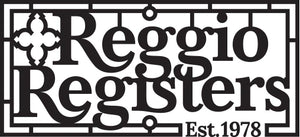7 Ways to Get the Most Out of a Vent Direction Cover
Vents can be in some odd places: on the ceiling, in the wall up high, next to walls on the floor, and under windows. None of these seem particularly ideal if you want to have maximum efficiency in your heating and cooling circulation. But how to redirect air from the vent doesn't have to be a mystery.
That’s where directional louvers come in. Directional louvers are a piece you can add to the back side of your register that allows you to redirect air from the ceiling vent or the floor vent. So if that vent opening is under a bed, you can adjust airflow out into the room instead of losing all that air to the underside of the bed.

Check out these seven examples of how directional louvers successfully redirect air from the vent out into the room.







Frequently Asked Questions about Redirecting Air from the Vent
What are directional louvers and how do they help control airflow?
Directional louvers are adjustable fins built into air registers or vent covers that allow you to control the direction of airflow in a room. Unlike fixed grilles, directional louvers can be aimed to push warm or cool air exactly where it’s needed—improving comfort, airflow efficiency, and HVAC performance.
How can I redirect air from my vents to make a room more comfortable?
Redirecting air from vents is easy with directional louvers or vent deflectors. By adjusting the louvers on your register, you can aim airflow away from furniture, windows, or ceilings and direct it toward areas that need better heating or cooling. This is especially useful in rooms with hot or cold spots.
What’s the difference between a vent deflector and a directional louver?
A vent deflector is an external add-on that redirects airflow, often made of plastic and placed over existing vents. A directional louver, on the other hand, is built into the register itself, offering a more seamless, durable, and aesthetically pleasing way to control airflow direction.
How do I fix uneven airflow or hot and cold spots in my home?
Uneven airflow can be caused by poor ductwork design, blocked vents, or static registers. Using air vents with directional louvers allows you to manually redirect airflow to better distribute warm or cool air throughout your home, helping eliminate hot and cold spots for a more balanced indoor climate.
Do directional louvers improve HVAC efficiency?
Yes. By directing airflow where it’s needed most, directional louvers reduce energy waste and help your HVAC system maintain a consistent temperature more efficiently. Instead of overworking your system to compensate for blocked or misdirected airflow, louvers allow precise air control.
What’s the best way to direct air vents in a room?
The best direction for air vents depends on your room layout. Generally, aim warm air downward in winter and cool air upward in summer. Directional louvers make this easy by letting you adjust airflow angles without replacing the entire vent cover.
Can directional louvers help improve airflow in a two-story house?
Absolutely. In multi-story homes, airflow can be tricky—especially with hot upstairs rooms. Directional louvers give you manual control to push air where it’s most effective, helping to better regulate temperatures across floors without costly HVAC adjustments.
Are there stylish vent covers that also allow airflow control?
Yes! Reggio Register offers decorative vent covers with built-in directional louvers—combining timeless design with functional airflow control. These architectural registers are ideal for homeowners who want beauty and performance without compromising one for the other.
How do I adjust the airflow direction from my wall or floor vents?
If your register includes directional louvers, simply tilt the adjustable blades to aim air where needed. For floor vents, angle air away from furniture or rugs. For wall vents, direct airflow downward or toward the center of the room to maximize circulation.
What’s the benefit of upgrading to directional louvered registers?
Upgrading to directional louvered registers enhances comfort, allows airflow customization in each room, improves energy efficiency, and adds a high-end, designer touch to your home. It’s a simple change with a noticeable impact on how your HVAC system performs and feels.

